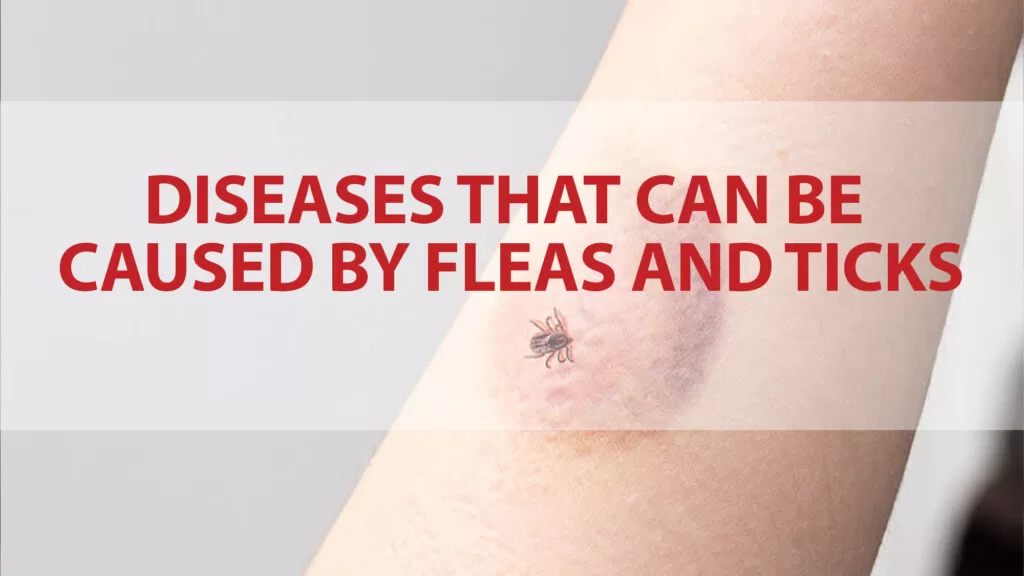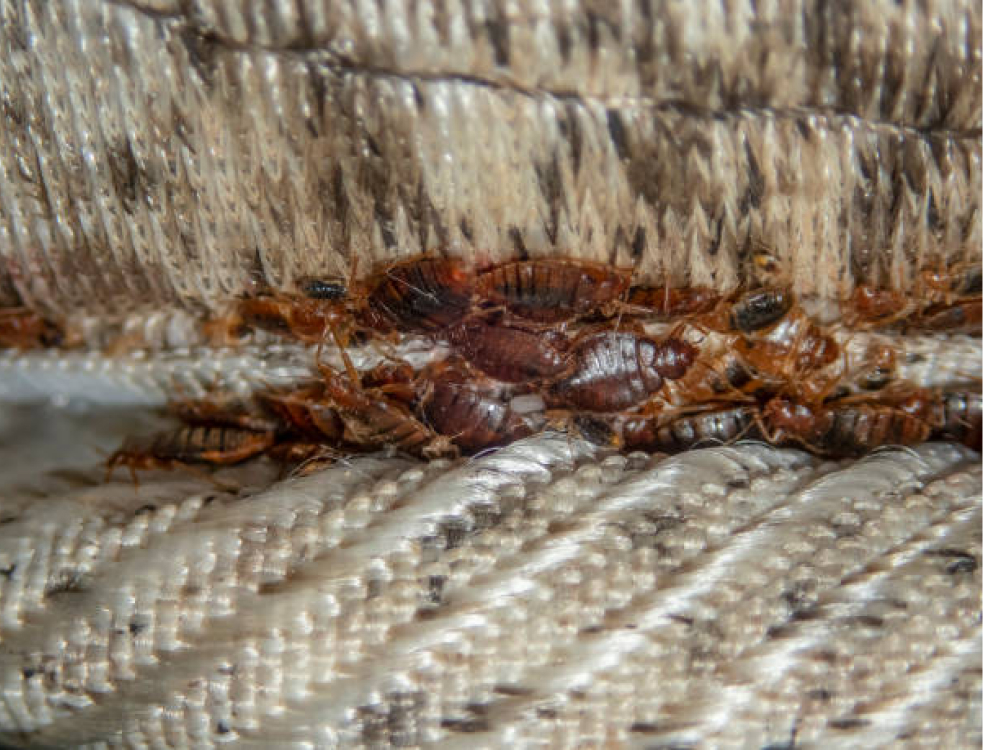Got pets at home? Then you should be careful about fleas and ticks. These tiny parasites may seem like an insignificant problem, but they can cause some rather serious health issues. Fleas and ticks can lead to much more than itchiness and rashes when they live and feed on your pets.
They can transmit a long list of diseases to their hosts, so it is vital to take preventive measures to keep fleas and ticks out of your house. But, first, let’s look at all the different infections and illnesses each of these pests can cause.
Diseases Caused by Fleas
Murine Typhus
Murine typhus, caused by the rickettsia bacteria, is primarily spread by fleas that feed on rats’ and cats’ blood. The bacteria spread when the faeces of the fleas come in contact with a wound. This is concerning because it means the fleas can both create a wound and infect it at the same time.
Wondering how? An infected flea breaks the skin when it feeds. This creates an injury. Plus, the bugs might defecate simultaneously as they bite. So, their faeces might come in contact with the skin and therefore cause an infection.
Murine Typhus causes unpleasant symptoms such as stomach pain, loss of appetite, nausea, fever, rash, and body ache. If left untreated, it can cause serious problems such as organ damage. Fortunately, you can avoid this disease altogether by keeping your home free of fleas. All you have to do is take some simple flea-control measures such as spot-on treatments, oral medications, and shampoos.
Mycoplasma Haemofelis
Mycoplasma haemofelis is another parasitic, bacterial disease that infects cats through flea bites, mosquito bites, and ticks. It is an infection that can cause anaemia and fever. Humans, too, can get infected if they are immunocompromised.
The bacteria attach to the infected hosts’ red blood cells, tricking the brain into marking the red blood cell as a foreign particle. When this happens, the infected human or cat’s immune system destroys the targeted red blood cells.
Destruction of a significant number of blood cells can cause anaemia. Vets can prescribe antibiotics, but treatment for severe cases may require a blood transfusion. Treatment for mycoplasma haemofelis can usually take up to around six weeks.
Tapeworms
There is no doubt that tapeworms are among some of the most hated parasites. Pets can get these parasites from swallowing infected fleas. Sometimes, cats can get tapeworms by consuming infected mice.
Adults rarely get tapeworms from fleas, but children can get infected if they swallow an infected flea accidentally. Thankfully treating tapeworms is relatively easy. Both humans and pets can take praziquantel as a treatment. This is a drug that can be taken orally and works by dissolving the tapeworms in the intestine. Praziquantel is also available in injection form for pets.
Cat Scratch Disease
Caused by the bacteria Bartonella henselae, the cat scratch disease is one of the most common diseases among felines. Common symptoms include fever though some cats do not get sick because of this virus. However, other cats might have more severe symptoms like vomiting, lethargy, red eyes, loss of appetite, and swollen lymph nodes. If your pet develops any of these symptoms, do bring them to the veterinarian.
Cats can pass cat scratch disease to humans by scratching or biting hard enough to create a wound or by licking on open scabs or wounds. Even though humans do not usually face any serious consequences from the cat scratch disease, it can affect the eyes, brain, heart, or other organs in some rare cases.
Dermatitis and Hair Loss
Some cats and dogs have an allergic reaction to flea bites and saliva. This allergic reaction is called dermatitis, which causes skin inflammation and scabbed red and itchy skin. In fact, the biting and itching due to skin irritation can be so severe that infected animals can scratch their fur to the point of creating bald patches.
Diseases Caused by Ticks
Lyme Disease
Did you know dogs can get Lyme disease too? The infectious disease caused by Borrelia burgdorferi can transmit through tick bites. The main culprit behind Lyme disease is hard-shelled deer ticks in particular.
Even though most dogs do not show any severe symptoms, some might have symptoms like sluggishness, fever, and lameness. Lyme disease can also cause breathing difficulties, loss of appetite, and sensitivity to touch.
Anaplasmosis
Anaplasmosis is a bacterial infection which has very similar symptoms to Lyme disease. It causes fatigue, fever and lack of energy. When infected with anaplasmosis, cats and dogs might stop eating or be unable to walk or stand. Some pets may even have nosebleeds and other bleeding problems.
Babesiosis
Babesiosis is a condition where ticks attack your canine’s red blood cells. If you notice your dog having pale gums and yellow-orange sclera, it might have babesiosis. Fever often accompanies the condition. Moreover, it makes the infected pet weak.
Rocky Mountain Spotted Fever (RMSF)
Rocky Mountain spotted fever (RMSF) affects only dogs and humans and can be spread through rabbits, mice, rats, and other small mammals that ticks feed on. A mild case would involve symptoms such as vomiting, coughing, and diarrhoea. In more severe cases, there will be nosebleeds, blood in the stool or urine, red eyes, and physical instability.
Other Diseases Caused by Ticks
Your pet may also suffer from ehrlichiosis if an infected tick bites it. Up to three weeks after a cat or dog is bitten, it can show symptoms such as nausea, loss of appetite, and nosebleeds. However, if diagnosed early, ehrlichiosis can be treated easily.
Hepatozoonosis is another concerning condition. It is a deadly disease that spreads from eating infected ticks. Telltale signs of this include lack of muscle strength or reluctance to move or stand. If your pet is showing these symptoms, talk to a vet immediately.
Cytauxzoonosis is another disease that cat owners should be aware of. It spreads when ticks feed on bobcats. It is deadly to cats but is not known to affect dogs. The disease spreads rapidly and causes loss of appetite, breathing problems, jaundice, and even coma.
There are a lot of other diseases too that can be casued by ticks, so protect your loved ones by ensuring there is no tick infestation in your house.
Conclusion
Both fleas and ticks can spread an alarmingly large number of diseases. The ailments are often transmitted when the pests bite. However, there are also conditions caused by ingesting an infected tick or flea.
If your pet has been exposed to fleas, it may suffer from murine typhus, mycoplasma haemofelis, tapeworms, cat scratch disease, or dermatitis and hair loss. On the other hand, tick exposure can lead to Lyme Disease, anaplasmosis, babesiosis, Rocky Mountain spotted fever, ehrlichiosis, hepatozoonosis, and cytauxzoonosis. And also, some of these illnesses can be passed on to you and your family.
While some of these conditions are not very serious, the diseases caused by fleas and ticks can sometimes lead to severe symptoms such as coma or organ damage. So, it is essential to always look out for the relevant signs and seek treatment early.
The way to keep these diseases at bay is to ensure you don’t have a fleas and ticks infestation in your house. For that, you should keep your pets and house clean as well as get pest control done regularly.







